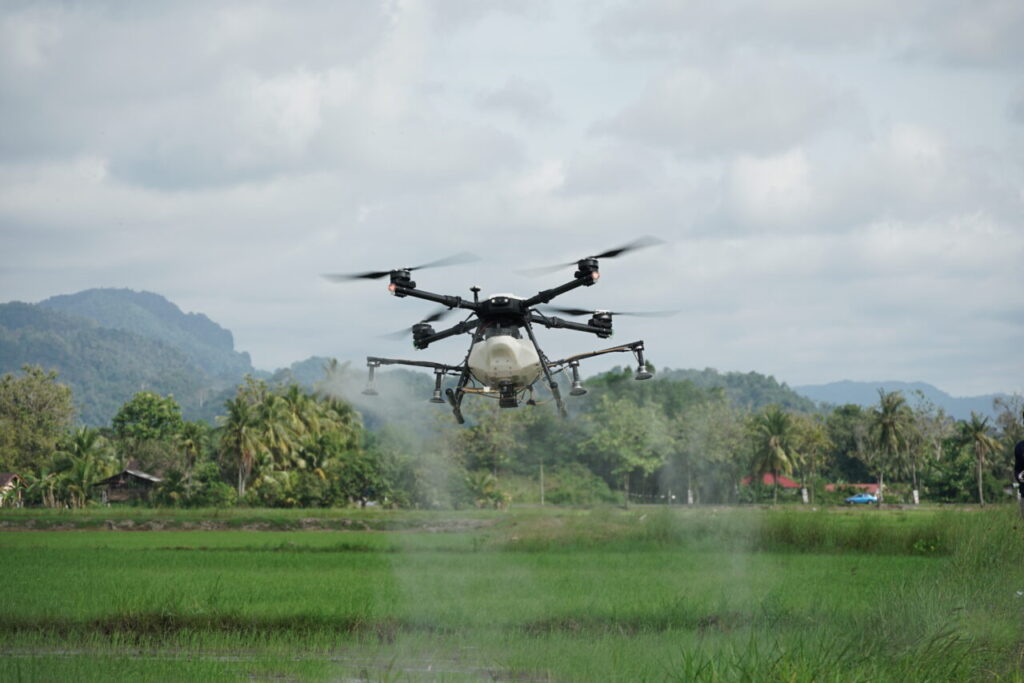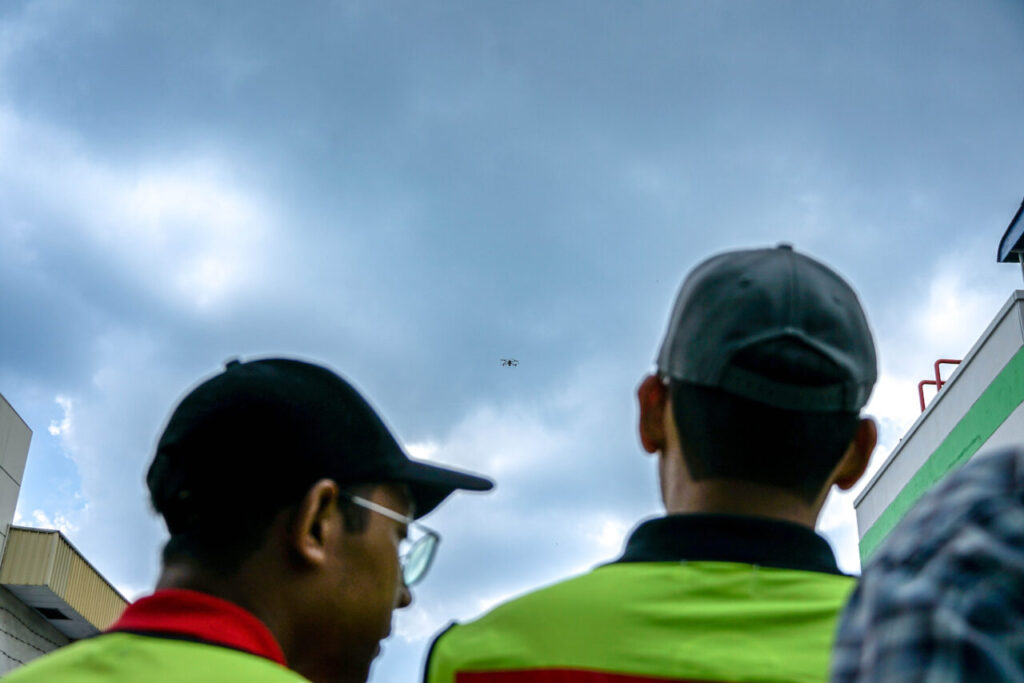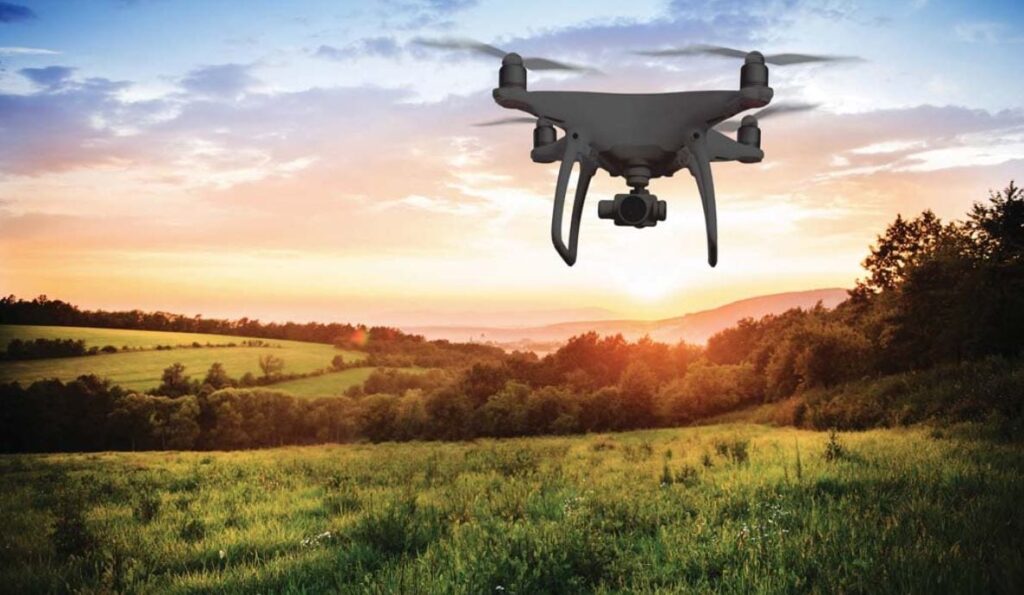Autonomous drones, also known as unmanned aerial vehicles (UAVs), utilize advanced Artificial Intelligence (AI) for navigation and operational functions, eliminating the need for human pilots. These UAVs are capable of autonomously handling various tasks, such as takeoff, landing, aerial site inspections, and surveys, relying on their AI-powered software to make independent decisions throughout the process.
Many individuals would likely interpret “autonomous drones” as “smart technology.” These drones can operate independently, referred to as “system initiative” or “full autonomy” in technology terms. They are programmed with a diverse range of responses to complete various tasks for industrial purposes. It’s essential to note that this technology is not a product of science fiction; it largely exists, though no officially approved autonomous drone systems are currently operational to the extent where no human intervention is needed. The primary limitation is not technological but rather lies in the political willingness to accept and embrace such a controversial technology, as it would involve lethal machines functioning without direct human supervision.
How does Autonomous Drone function?
With a few functions such as accelerometers which are utilized to measure the drone‘s acceleration in three dimensions, while gyroscopes gauge its angular velocity or rotational speed. By detecting the Earth’s magnetic field, magnetometers determine the drone’s heading or direction, while barometers estimate altitude by measuring air pressure. These sensor data are processed by the flight controller to ascertain the drone’s current state and make necessary adjustments to motor speeds, ensuring stable flight.
A crucial element of a drone’s autonomous flight system is its Global Positioning System (GPS) receiver. GPS technology enables the drone to pinpoint its precise location on Earth by receiving signals from a network of orbiting satellites. Armed with this information, the drone can navigate to specific waypoints, maintain a fixed position in the air, or follow a pre-programmed flight path. Some advanced drones even employ additional satellite navigation systems like GLONASS or Galileo to enhance accuracy and reliability.

Beyond GPS, many drones now incorporate vision-based sensors such as cameras and LiDAR to bolster their autonomous capabilities. These sensors grant the drone the ability to perceive its surroundings and autonomously avoid obstacles in real time. For example, a drone equipped with a forward-facing camera can use computer vision algorithms to identify and track objects in its path. Conversely, a drone with a LiDAR sensor can create a detailed 3D map of its environment by emitting laser pulses and measuring the time it takes for the light to return.
The drone’s communication link with the ground control station is another vital aspect of its autonomous flight system. This link facilitates real-time monitoring of the drone’s status, transmission of commands, and reception of live video feeds from the onboard camera. The communication link can be established using radio frequencies or cellular networks, tailored to the range and specific requirements of the drone’s intended application.
5 Benefits of Autonomous Drones
Autonomous industrial drones are revolutionizing the processes of routine maintenance, overseeing safe operations, ensuring business continuity following severe weather or incidents, and maintaining compliance for industrial and critical infrastructure sites. By eliminating human error and the associated overheads of piloted drone systems, these autonomous drones are reshaping the approach to these essential tasks.
Safer and more frequent equipment and site inspection
The implementation of on-site autonomous industrial drone systems facilitates enhanced, regular, and precise monitoring of vast or hazardous locations and equipment. These autonomous drones enable close-up visual and thermal inspections, granting access to areas beyond the reach of human teams creating safer security. Moreover, the data gathered during autonomous drone missions establishes a foundation for more efficient anomaly detection, crucial for predictive maintenance. Manual inspections carry risks for employees, are time-consuming, and may necessitate equipment shutdown, while infrequent inspections can lead to prolonged and costlier downtime.
Faster emergency response
Autonomous industrial drones provide real-time aerial footage around the clock, enhancing safety measures, streamlining emergency response, and bolstering security capabilities, thereby offering significant benefits. Due to rapid response from autonomous drones that were not tied to the harsh terrain, assistants can be dispatched to emergency sites while keeping employees out of harm’s way. Autonomous drones that’s equipped with thermal imaging and computer vision are able to alert employees of incoming fire and gas leaks. Due to its simplicity, these drones are the perfect mechanism to conduct routine detection and tracking to prevent potential threats and immediately leverage onboard sensors and computer vision.
More efficient and accurate surveying and mapping
Autonomous drone systems deployed on-site are capable of conducting site surveys and mapping terrains efficiently. Utilizing integrated elevated map detection, these drone systems can navigate challenging and hazardous environments without endangering employees. They excel at mapping harsh sites and accurately calculating area, volume, and linear measurements. In the context of a mining company, transitioning to daily drone pile inspections enables precise materials transport, leading to cost reductions, and providing valuable support to logistics teams.
Tighter security
Affordably enhance security patrols for facility perimeters, gate inspections, parking lot monitoring, and inventory inspections – all without the need for additional personnel. When facing shutdowns, seamlessly escalate security operations using a fully-autonomous solution that demands minimal on-site human presence.
Stricter compliance
Autonomous drones are able to complete industrial sites by collecting data to support environmental responsibility. By getting frequent data and preventing equipment failure that could result in ecological disasters. The activity of auditing collected over time with high accuracy could streamline regulatory compliances.

Industries that are using Autonomous Drones
Agriculture
After drones were being used in the agricultural field for so long, autonomous drones have started being implemented due to their repetitive daily activity. Farmers’ workload and time were able to be minimalized with the help of these coded drones. Specialized and programmed drones are deployed to monitor signs of plant and crop growth and deliver the required amount of fertilizer autonomously. These drones use live feed to monitor the growth of crops and determine which ones need additional nutrients. Subsequently, the drones dispense an appropriate amount of fertilizer to nurture these plants.
When it comes to dealing with pests and insects that may invade agricultural farms, autonomous agricultural drones utilize their high-quality sensors. By hovering over the crops, the drones detect the presence of pests and insects and automatically spray precise quantities of insecticides and pesticides where needed. Compared to human labor, this automated approach proves to be much more efficient in addressing crop-eating insects, providing substantial value for the investment made in this aspect.

Film-making
The film-making industry has undergone a remarkable transformation, shifting from the need to use costly and unconventional equipment like industrial cameras and helicopters for aerial shots to the effortless utilization of autonomous drone cams for cinematic videography. With the advancement of autonomous drones, filmmakers now have access to 4k recording capability and high-quality multi-camera setups. These features cater to directors and producers of major AAA films in the mega-film industry, enabling them to capture dynamic aerial shots for various movie scenes.
Autonomous drones excel not only in shooting stationary objects but also excel in capturing intense and fast-paced action sequences, such as high-speed car chases, and other moving objects effortlessly. Major Hollywood and other film-industry productions rely on autonomous drones programmed to follow specific scenes or individuals, allowing them to achieve panned and zoomed motion shots of buildings, skyscrapers, action scenes, and aesthetically pleasing cinematography.
The application and significance of autonomous drones in the film-making industry have no bounds, enabling a world of possibilities for aerial cinematography.
Survey and Mapping
In the realm of surveying and mapping, the introduction of autonomous drones has revolutionized the industry, promoting safety and efficiency in various ways. One of the primary advantages lies in safeguarding employees. Traditional land surveying often subjects workers to unpredictable weather conditions, physical fatigue, and hazardous terrains. By employing autonomous drone mapping solutions, the risks associated with heavy equipment handling and potential injuries are mitigated. Drones can effortlessly conduct site surveys, generate comprehensive aerial maps, and securely upload data to the cloud, all without endangering human lives, offering a seamless and secure workflow.
Another game-changing aspect of drone mapping is the remarkable speed it brings to surveying projects. Compared to laborious and time-consuming land surveying that could take days or even weeks, autonomous drones can accomplish the same level of accuracy in a matter of minutes. This accelerated surveying process allows for real-time access to up-to-date site information, enabling swift decision-making and enhanced project management. Moreover, the cost-effectiveness of drone mapping allows companies to allocate resources more efficiently, potentially increasing the number of projects undertaken and completed within shorter timeframes, thus optimizing the use of available budgets.
In conclusion, the integration of autonomous drones as a single surveying tool presents an incredible leap forward for the industry. By replacing traditional equipment and methods with swift and accurate drone technology, surveyors can achieve the same results without strenuous physical labor and exhaustion. The versatile application of drones enhances safety, reduces surveying time, and optimizes project budgets, making autonomous drones an indispensable asset in modern surveying and mapping practices.
Autonomous Drone in the future
The uncertainties associated with autonomous drones make the realization of fully autonomous drones capable of creating their own 3D planning paths nearly impossible. While theoretically possible, the practical reality is more challenging, as autonomous drones may struggle to operate entirely independently without human assistance. Several limitations come into play, such as factors affecting drone battery performance, including payload, communication, and motor thrust, which must be taken into account when computing a path for an autonomous drone.

Conclusion
Therefore, adopting a human-machine partnership might present a viable solution. This approach offers a more reasonable alternative to fully autonomous weapons and is also comparatively easier to implement. In the human-machine partnership, the creativity of human operators combines with the advanced data processing and sensors of drone computers. This division of labor and responsibility ensures that the computer handles data collection and processing, while crucial decisions, like target identification and discerning objects in low visibility conditions, remain under the control of humans.
Having a human involved in drone operations ensures constant awareness of the drone’s surroundings, leading to clear accountability for the drone’s actions, unlike fully autonomous systems where responsibility can be uncertain. With the human-machine partnership, the strengths of both humans and computers complement each other, as they may develop different perspectives on a situation. The human operator can leverage the information gathered and processed by the computer to make more informed decisions.
Reference
The Ultimate Guide For Autonomous Drones in Industry




